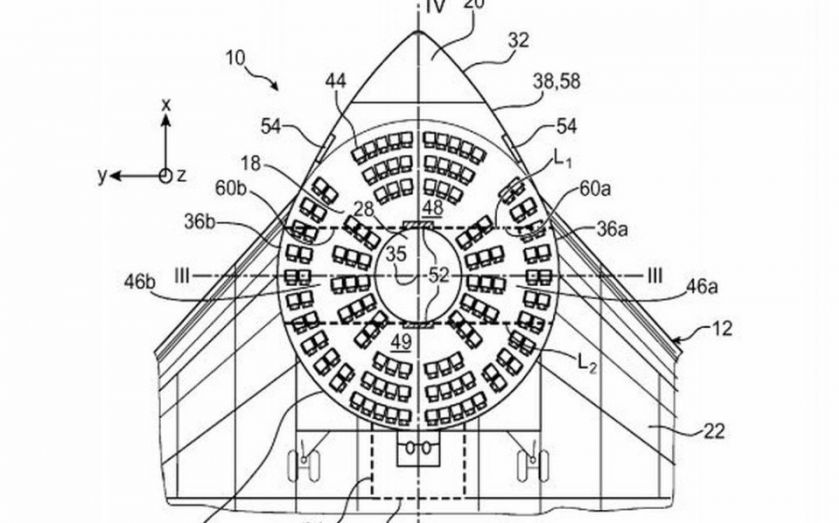| Updated:
Windowless cockpits and virtual reality: The flying doughnut isn’t Airbus’ wackiest patent

Airbus has a long and varied history of weird and wacky patents (more on which later), but this takes the biscuit. Er, doughnut.
The aircraft manufacturer has filed a patent application for flying doughnuts – because apparently, aircraft cabins shaped like the snack are excellent at containing the stresses of pressurised cabins.
The novel structure would also allow the engineers to do away with the heavy and cumbersome parts found at at the front and rear of current aircraft, providing an “economic and efficient” solution to the shortcomings of the traditional, cylinder-shaped cabin.
“The invention allows structure to be more resistant to loads induced by the cabin pressurisation, while allowing to reduce or even to avoid the need for a sealed bottom, and while allowing to increase the space available for passengers,” the company wrote in its application.
The tall among us will be jammy bunch if it goes ahead, too – one of the upsides of the new design is extra leg room for all on board.
The company filed its application in the US last month, but while the idea might sound appealing, unfortunately it's unlikely to ever see the light of day – Airbus files for over 600 patents a year, mainly just for the sake of protecting intellectual property. “This is not something that’s currently under active development,” the company said.
PLANS IN THE PIPELINE
A flying doughnut is just the latest in a string of unusual ideas Airbus has filed for the rights to this year. Few of them have been put into practice, however.
In July, it filed a patent application for the development of standing, bicycle-like seats, arguing that although they would minimise passenger comfort, they would maximise airline profits because more people could fit in.
“In all cases, this increase in the number of seats is achieved to the detriment of the comfort of the passengers,” Airbus wrote in the patent filing, but added that this is tolerable if “the flight lasts only one or a few hours.”
Also in July, it patented windowless cockpits. This doesn't mean a pilot sitting in the open air while flying at 30,000 feet – it means windows would be replaced with 3D view screens made of smooth aluminium. The idea is that it could improve a pilot's field view.
Two months later, virtual reality struck the minds of engineers at the Airbus factory in Toulouse, France. Given the extreme stress some passengers experience during a flight, they decided to buy ownership for a helmet that would use 3D images and holograms to transport them to another, much calmer world, away from the noises and sights of the plane itself.